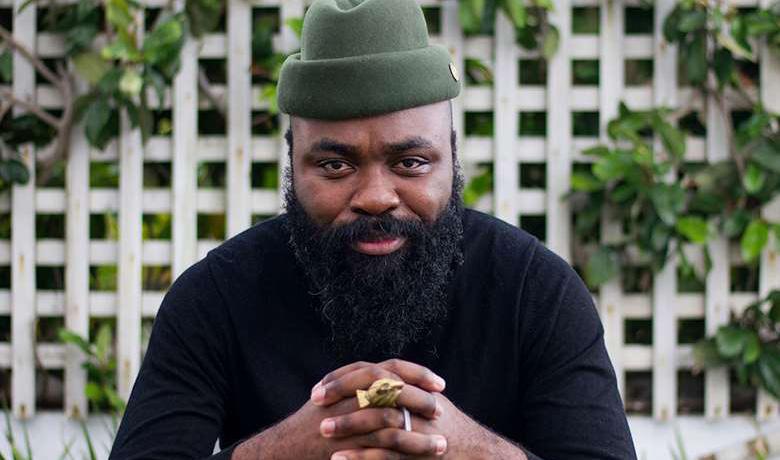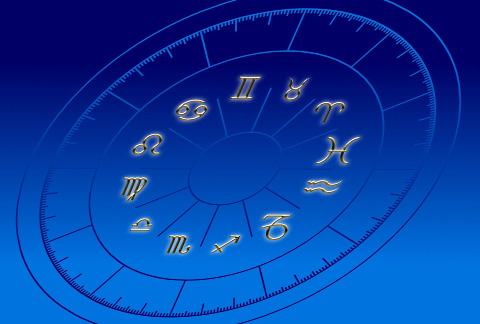
18 minute read
Arts & Entertainment
Film/TV pg 15, 16 | Travel pg 19 | Food pg 20 | Jazz pg 21
Your Stars
Simone Ashley in ‘Bridgerton’ Season 2—an actress to keep an eye on
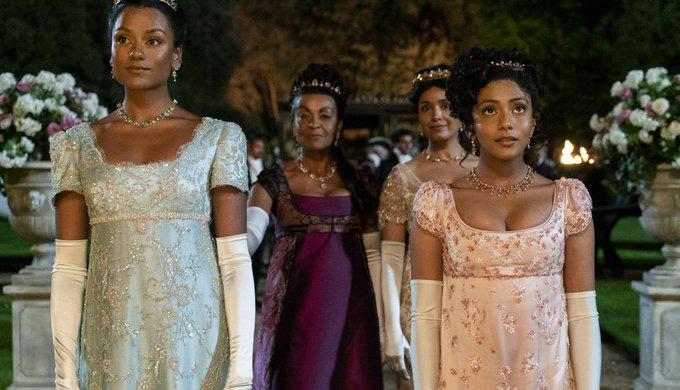
By MARGRIA
Special to the AmNews
There is no getting around how impacting “Bridgerton” Season 2 has been on the Black and Brown communities around the world. In America, where things are white and barely Black the arrival of two Indian characters, in key roles, in the second season, has set the social media world aflame, and rightly so.
And although the series is based on the book series written by Julia Quinn of which there are eight novels, one for each of the Bridgerton siblings, it was the visionary Shonda Rhimes (“Grey’s Anatomy,” “Scandal,” “How to Get Away With Murder”) and her team that brought these characters to the small screen, making sure to cast gifted, multiracial actors. It’s a joy to watch. This attention to detail we can call the Rhimes touch because there are very few showrunners that have a better hit record than Rhimes, who has ruled television for most of the past two decades.
Now, to the facts. “Bridgerton” Season 2 is more than just a success story, it’s taken hold of the imagination of millions and has zoomed to the No. 1 spot in 76 countries, with a viewership of 82 million+ homes, and is moving, like a bullet, to becoming the second-most watched series by total watch time on the platform. This is just another example of Rhimes’ ability to create another cultural phenomenon while keeping her fingers firmly on the cultural zeitgeist and making sure that multiculturalism is never lost.
Although it’s not yet clear if the Netflix series will follow the same format as the books (or run eight seasons), Season 1 was mostly adapted from the first book in the series, “The Duke & I,” and the second, “The Viscount Who Loved Me.”
The love story in Season 2 focuses on Anthony Bridgerton (Jonathan Bailey) and Kate Sharma (Simone Ashley, Kate Sheffield in the book), who are both equally passionate and unmovingly stubborn in the show. The sexual chemistry is clear for all to see, except the feuding lovers.
The second season finds Lord Bridgerton now determined to marry out of obligation, not love since he’s never recovered from witnessing the sudden death of his father (from a bee sting) at the
age of 38.
The young Lord is taken for a spin when Edwina (Charithra Chandran)—the diamond of the season—will only marry the man approved by her older, deeply loved half-sister Kate. When Anthony begins to court Edwina, Kate’s defenses spring alive believing him to be a “rake, with a capital R” as a gossip columnist, Lady Whistledown, describes him in her popular scandal sheet. But it’s the undeniable chemistry between Anthony and Kate that makes this season so special.
Ashley has been a working actress for years, cutting her teeth in many well-known British dramas including “Doctors,” “Casualty,” “Broadchurch,” and “Guilt.” Then her career took a great jolt forwards when she landed a role in the Netflix smash hit, “Sex Education,” playing the hip, cool girl Olivia Hanan, a girl terrified to show her boyfriend her face during her sexual climax.
We caught up with Simone Ashley (Kate Sharma) to chat about her role in “Bridgerton” who is on record stating that representation “matters” (and, it does), and to discuss her character.
Amsterdam News: Congratulations on the success. They only gave me eight minutes which means three questions. Is there a question that you wished reporters had asked you, that they did not? She’s a complicated character. Simon Ashley: Thank you. Well, I would like to speak more about my character [Kate Sharma] and there has been such a wonderfully warm response to having the Indian representation on this
show. This character is inspired by author Julia Quinn, and she is such a nuanced, complex character and one that I enjoyed playing. AmNews: You are an extremely gifted thespian and your body language is pure perfection. How did you work with the director?
SA: Thank you. I didn’t want to portray the character as a villain, someone who betrays her sister. This is about family, her love for her family. I wanted to portray a woman that’s authentic to her heart, and protecting Edwina, and her family. That’s the value that I wanted other women to see. I wanted to show that strength. AmNews: Love is her motivation. It comes through very strongly.
SA: Kate is someone who wants to blend into the background. When we first meet her, her hair is in a bun, the make-up is minimal. She wears very dark colors. She isn’t very effervescent because she wants to put her sister first and in the spotlight. Kate, she’s the silent, kind of assigned type, in the background. She’s very observant. AmNews: That’s an interesting way to describe her but accurate from what I viewed.
SA: She’s a people watcher, she loves to observe and I think she’s very reserved, and I think she’s not very open to being vulnerable with people. She likes to keep to herself. AmNews: As I said, at the top of this conversation, she’s a very complicated character.
SA: I think that her journey is that she wants to run away from her problems. Her loss of her father, especially after she’s married off her sister. Then we slowly see her loosen up and become more colorful, with what she
wears, and how she’s letting her hair fall. And she’s opening up to the idea of falling in love. AmNews: Well said, and we do watch Kate fall in love—and the struggle of letting go is so wonderfully, delicious.
SA: I think, for me, it was important to tell that part of the story. She was in a rock and a hard place but she genuinely was falling in love with this person, Anthony, who is kind of her soulmate. And that journey of loving herself and setting herself free from those duties and responsibilities. AmNews: Sounds like a fun challenge, am I correct?
SA: It was a fun challenge to play a character like that. Someone so subtle, with minimum speech in certain areas, and I enjoyed playing Kate, through her eyes, and her observations of this world that she’s in. AmNews: Again, it goes back to my comment about your beautiful body language.
SA: Thank you. I am drawn to people like that anyway—mysterious—still waters run deep and that applies to Kate. AmNews: Understatement, what I also loved, speaking about subtleties, is how Kate connected with the animals which included her dog, the horse, and a bee. A horse is a wild beast, you must pay attention.
SA: I resonated with Kate on this because she’s not like her sister, Edwina, a super academic, who practiced all the dances, Kate has an intuitive heart. She may not be as articulate as Edwina but she is very intuitive with animals which I applied with the bee sting scene, in episode 3, and when I was speaking with the director we discussed how she’s the only one that can calm Anthony down like she’s able to tame a wild horse. There is something about her in that ability to calm him because there is something animalistic about Anthony and Kate can handle that, she’s the only woman to put her foot on the ground [so, to speak] and hold the reins. AmNews: Anthony is like that fairytale character, the one with the lion who is ailing because there is a splinter in his paw. He’s growling because he’s in pain.
SA: Yes. I love that analogy. Exactly. She’s very brave for both of them. AmNews: Let’s talk about the look—the no beauty look created by makeup artist Pat McGrath.
SA: All hail to [makeup artist] Pat McGrath, she’s one of the loveliest people that I’ve ever met. Her beauty products are just incredible and we used her products on the show. I was more than happy, I was incredibly honored to wear the products. And when I walked on the set, I felt so beautiful, and confident, like a princess, and that my skin was being shown off in the best way possible and that’s something rare. AmNews: You said a mouthful. To get our colors correct, on-screen—it’s close to being a miracle.
SA: It’s beautiful how it brings dark skin to life with the lighting, and the makeup—everything. AmNews: You did not look like a zombie.
SA: Exactly, no gray tones on this set. AmNews: Not with Ms. Pat McGrath.
Charithra Chandran is cast as Edwina Sharma, who comes to England where her mom and half-sister are in search of love and marriage (Liam Daniel/Netflix photo)
Simone Ashley in Season 2 of “Bridgerton” (Liam Daniel/Netflix photo)
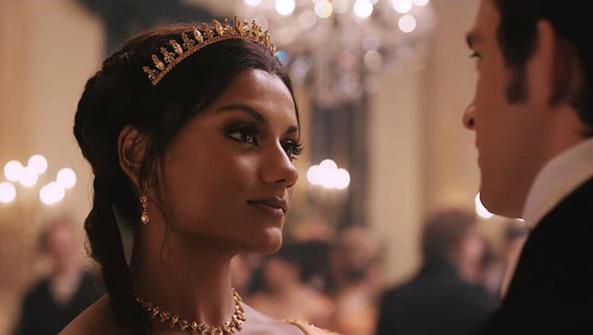
16 • April 14, 2022 - April 20, 2022
THE NEW YORK AMSTERDAM NEWS
A R T S & E N T E R T A I N M E N T
Michelle Yeoh in “Everything Everywhere All at Once” (Courtesy photo)
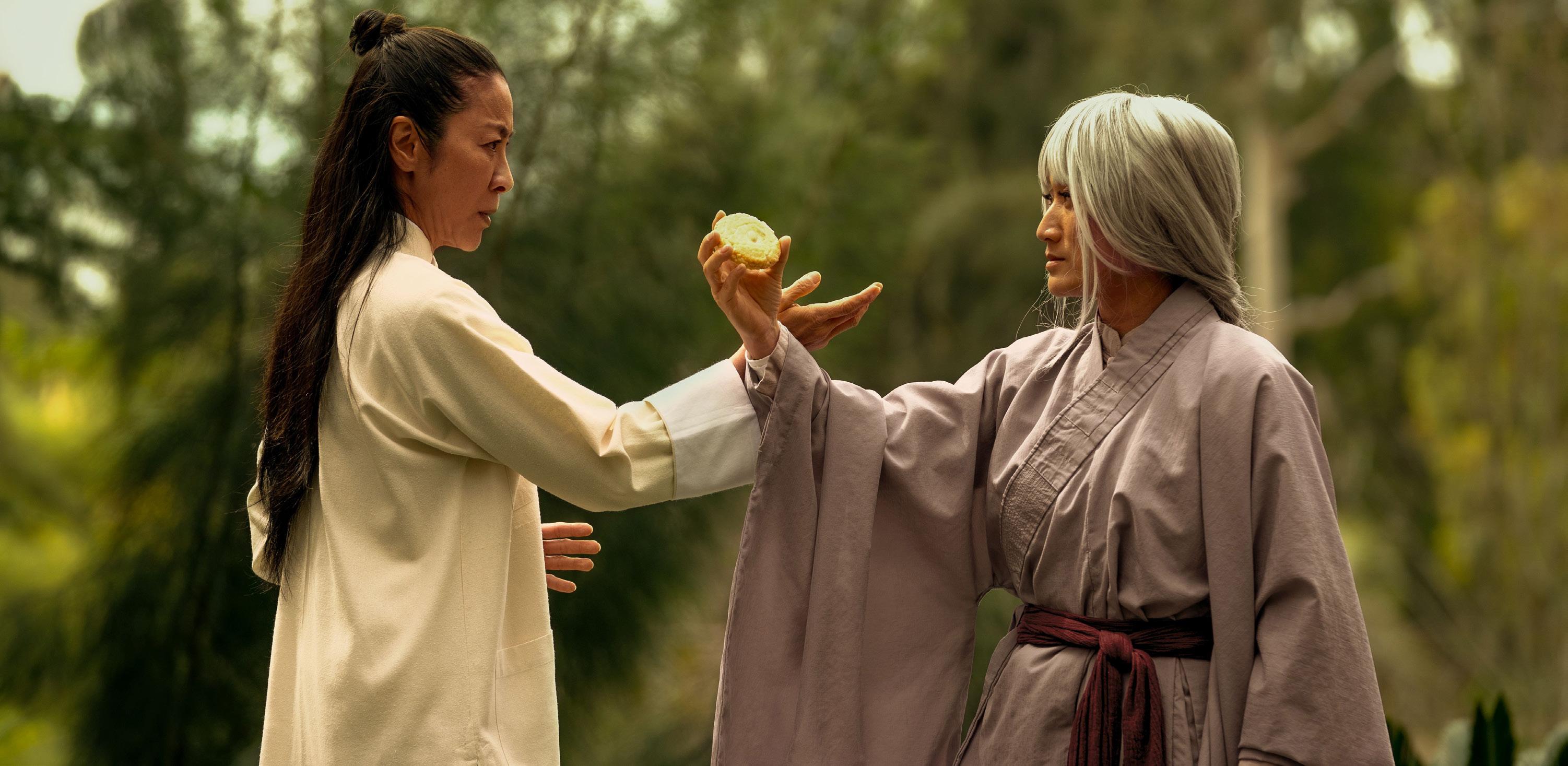
By MARGRIRA
Special to the AmNews
“Everything Everywhere All at Once,” directed by the Daniels a.k.a. filmmakers Daniel Kwan and Daniel Scheinert (“Swiss Army Man”), is an exciting movie that makes the argument that there is every conceivable variation of our lives that exist in an alternate universe. We walk through these worlds with a heroine (Michelle Yeoh) who, when we first meet her, is the most unlikely soul to lead change of any kind.
This is the kind of movie that makes you think and the filmmakers are slavishly meticulous with every shot that fits perfectly inside the world as created and executed by the Daniels.
I think the Daniels wanted “Everything Everywhere All at Once” to jolt the viewer, and to meet that goal they delivered an unparalleled sensory-overload experience, I mean, if you blink you might miss an important visual clue. The film moves fast, and to make the experience even more exciting, it’s a multilingual film with the key characters speaking in Chinglish (Chinese/English).
Yeoh plays immigrant matriarch Evelyn Wang, who switches between using English, Cantonese, and Mandarin, sometimes in mid-sentence. She operates a laundromat with her husband Raymond (Ke Huy Quan) and we meet them at a tender time, being audited by the IRS. The pressure mounts; as if the tax issue isn’t enough to drive a mind crazy, she’s burdened with social problems. For example, she can’t seem to please her father. Nothing she does will ever be good enough for Gong Gong (James Hong). You can imagine the foundation of her life because that’s the way Evelyn treats her frustrated adult daughter, Joy (Stephanie Hsu).
Life is getting harder for her. Raymond has drawn up divorce papers, but something odd stops him from serving them. He’s overcome by an unusual sensation on the way to the tax office, and here’s where it starts to get “odd”—ready? Another version of Raymond, from a parallel universe, suddenly occupies his body. Using a quick mental scan of this version of Evelyn, he tells her how to access her alternate lives, how to unlock all kinds of crazy, off-the-wall things.
Any sane person, which Evelyn is, would not know what to think but she follows Raymond’s directions, which gives her the ability to “verse-jump” which she tries, in the middle of the Wang family’s meeting with Deirdre (Jamie Lee Curtis), a grumpy IRS agent.
And the Daniels make sure we feel her maiden verse-jump inside the janitor’s closet, where split screens and odd visual effects express how it feels for Evelyn to be carrying on conversations in two places at once.
Raymond explains the rules that an alternate Evelyn has discovered, a physicist in another dimension, and this Evelyn learns that she is not cool and is living the “worst” version of herself. This means that all of the other possible Evelyns made more successful life choices.
For example, one version is a huge Hong Kong action star, others are a maid, an opera singer, a teppanyaki-style chef, and more.
It’s a visual smorgasbord and the Daniels present as many of these possible realities as possible in short, funny, tiny sketches. It’s absurd and fun—for example, there is a universe in which everyone has hot dogs for fingers and a world where people are mind-controlled by raccoons.
There is a shift into a spooky, apocalyptic mode where a demented alternate version of Deirdre comes after Evelyn with a vengeance, but she’s not the true bad guy here. The real threat is Evelyn’s daughter, Joy, who she’s burdened with a lifetime of crushing disappointments, to the point that little Joy finally snaps. In losing her cool, she reinvented herself as an entity known as Jobu Tupaki, who moves from universe to universe murdering Evelyns, making sure to leave a trail of chaos in her wake.
The Daniels are solid storytellers and as such, they make sense of chaos, and we happily embrace and amplify the sensation. Visually the editor keeps pace, and the score by Son Lux makes you lean in.
“Everything Everywhere All at Once” acknowledges that life and living “life” can be overwhelming, and we all know that family dynamics are tricky, and let’s be frank—this world isn’t fair. But believe it or not, the Daniels created a hopeful movie and it’s funny. For example, how can you not laugh when a giant everything bagel comes bursting through a parallel dimension to gobble up all that Evelyn holds dear?
It’s interesting to note that despite the 12 worlds only 10 principal characters, in this film, live in them. This is smart storytelling and by keeping the cast bite-sizable, we can distinguish between the various realities—including one where Evelyn and Joy are rocks.
Confident in their brand, the Daniels have made a film that mirrors their offthe-wall sense of humor.
“Everything Everywhere All at Once” delivers a wallop in what could be described as an emotionally draining 139 minutes. Is the film ambitious? You bet it is!
By HERB BOYD
Special to the AmNews
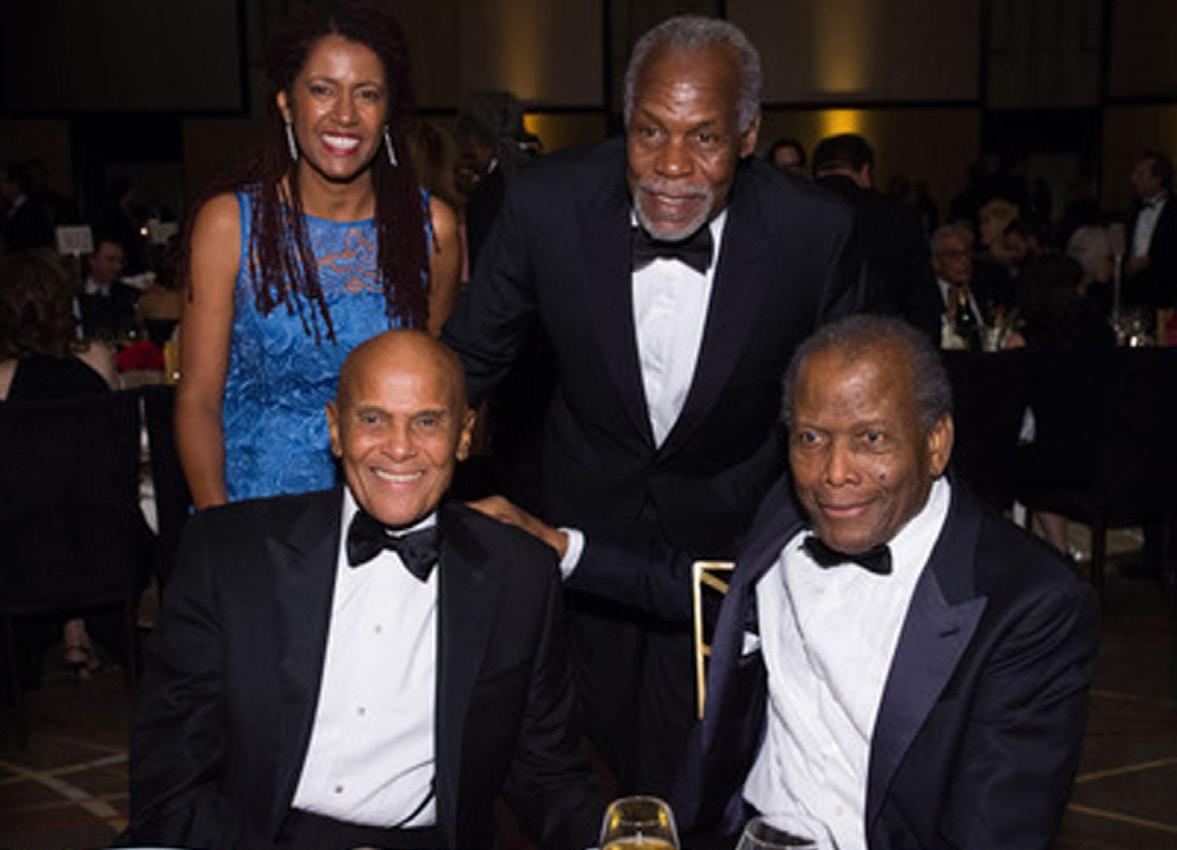
Even without the slap crap that has given the Oscars affair this year renewed attention, there was little chance that Danny Glover’s award would be noticed. Like several other notable moments, the “CODA” award for best picture and Ariana DeBose Best Supporting Actress (a first for a Latinx and gay in the category), and Questlove’s “Summer of Soul” pulling down the Best Documentary honor, Glover’s tribute was lost in the clamor and drama surrounding Will Smith’s smack-attack on Chris Rock.
Glover, as one of several recipients of Governors Awards, was honored along with Samuel Jackson, Elaine May and Liv Ullman, and given the Jean Hersholt Humanitarian Award for all that he has done in film and elsewhere to bring credit to society in general and specifically to the motion picture industry. As expected the award ceremony was not planned for the broadcast and later amid the brouhaha did get a quick mention.
In the world of film, Glover has been a standout since his role as Mr. in “The Color Purple,” though movie buffs, particularly those deeply committed to Black films, recall his work in such underthe-radar productions as Charles Burnett’s “To Sleep with Anger,” “Escape from Alcatraz,” and “Places in the Heart” with Sally Field. But it was the action film series“Lethal Weapon,” that brought him onto the theater marquee and into the living rooms of America.
His activism over the years has earned him comparisons to one of his heros, Paul Robeson, and if there is a seminal moment in his political evolution it can be traced back to his student days at San Francisco State University where he was a member of the Black Students Union that established Black Studies, spearheading the movement. The five-month strike there to form a Black Studies Department was one of the longest in the nation.
On many occasions he has reflected on these early years, most recently in an interview with Nicolas Rapold of The New York Times. “I witnessed my parents come of age and become involved in the postal union,” he said. “I can remember watching the Montgomery bus boycott when I was nine years old.” There were also the extended visits to his grandparents’ home in rural Georgia and hearing more stories about the struggle against Jim Crow and the fight for liberation. These moments forged a formative base that helped shape his merger of artistic endeavors with social and political activism.
“It was totally through the fact that theater became a tool in which to communicate in the Black Arts Movement,” he told Rapold of his involvement in the arts. “There had been movements of Black artists before then, certainly, with generations before then in the 20th century, the ascension of Black artists during that period of time, in which Sidney Poitier and Harry Belafonte, Ruby Dee and Ossie Davis, and so many more, became a part of the cultural landscape in our country.”
At various points of his productive life art and politics intersected, a veritable confluence of films and activism. In 1999, for example, he made a huge financial donation to fund TransAfrica Forum, an organization devoted to global justice, which he would later chair, and at the same time he was completing work on “Beloved” (1998) and preparing for “Boesman and Lena” (2000). A decade later he committed considerable time to foreign affairs in Haiti, particularly in association with Dr. Ron Daniels and the Institute of the Black World 21st Century, even going to South Africa to escort the beleaguered former Prime Minister Jean-Bertrand Aristide back to his homeland. This was during the period when he was putting the wraps on “LUV” and “Highland Park.”
Films gave Glover the opportunity to suture the often make-believe with reality, to acquire the funds needed to support his political commitments and also to inspire a sense of independence and to one day produce his own films. To this end for several years through his production company Louverture Films he has been busy raising the money and forging a team to tell the story of the Haitian revolution and its heroic leader, but for any number of reasons it’s still a work in progress. Even so, knowing of Glover’s indomitable will and drive, that dream remains a possibility, and wouldn’t it be wonderful to see Glover in the lead role or as the often overlooked revolutionary Mackandal, the chief who led the initial uprisings? Yes, that role would embody the vision and determination Glover has invested in all walks of his eventful life.
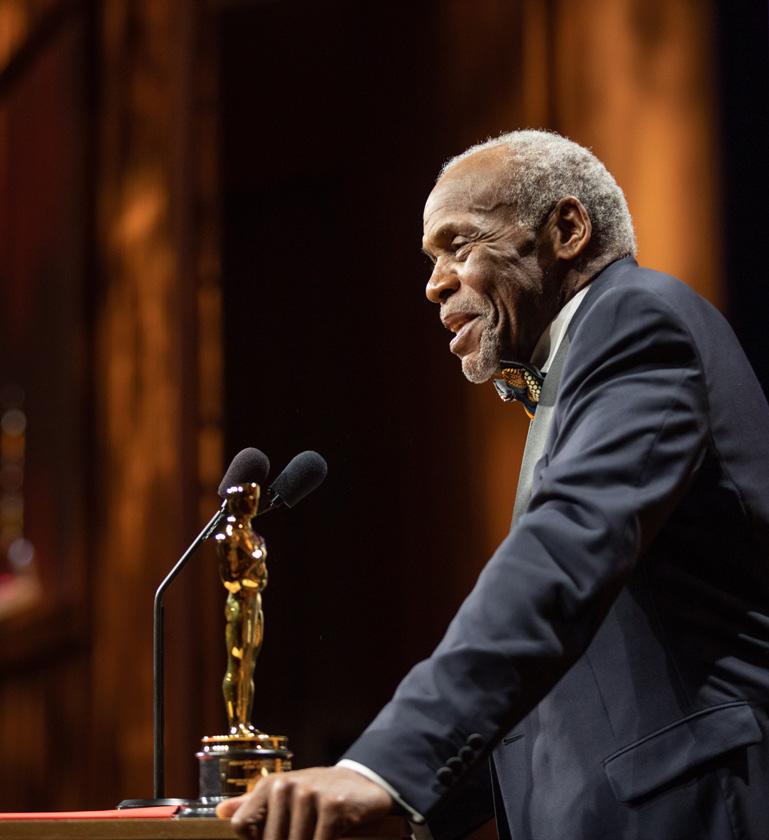
Danny Glover receives the Jean Hersholt Humanitarian Award (Oscars.org photo: https://www.oscars.org/search/ site/glover%202022/?fid=86841) (Left to right): Eliane Cavalleiro, Jean Hersholt Humanitarian Award recipient Harry Belafonte, Danny Glover and Sidney Poitier (oscars.org photo: www.oscars.org/search/site/glover%202022/?fid=39836)
Jazz label Blue Note launches Blue Note Africa imprint
By JORDANNAH ELIZABETH
Special to the AmNews
It has been announced that the iconic jazz record label, Blue Note, founded in 1939, has constructed a new imprint under the label’s umbrella. Blue Note Africa has emerged as an outlet and platform for jazz musicians hailing from the African diaspora.
The first release on Blue Note Africa will come this spring from the South African composer and pianist, Nduduzo Makhathini, whose new collection of music is titled, “In the Spirit of Ntu.” Makhathini was most recently heard on Rwandan and Ugandan recording artist Somi’s celebrated 2022 album “Zenzile: The Reimagination of Miriam Makeba.” Somi is the first African woman in history to be nominated for a Grammy in any jazz category.
“African music has been a major creative tributary for nearly every album in Blue Note’s extensive catalog,” says Blue Note President Don Was. “So it’s a great honor for us to partner with Sipho and his talented Universal Music Africa team in this new endeavor. Together, we will shine a global light on the incredible music emanating from Africa today.”
This new imprint is a momentous season in music history, launching an important support system and pipeline for artists emerging from all over the African continent in the jazz arena.
Blue Note writes, “If you trace the roots of American jazz back to its source, the path leads to Africa, and the exchange of musical ideas between the two continents is a thread that runs throughout the entire progression of jazz music throughout the 20th century to this day. In 1947, the legendary American jazz drummer and Blue Note legend Art Blakey visited Africa for the first time, a trip that was meant to be a few months but ended up lasting a couple of years as Blakey traveled to Nigeria and Ghana. It was an experience that would have a profound effect on Blakey both religiously and musically and led to a series of Blue Note albums that were deeply influenced by African percussion including ‘Orgy in Rhythm’ (1957), ‘Holiday for Skins’ (1958), and ‘The African Beat’ (1962), the latter of which featured traditional African drummers including Solomon Ilori who would release his own Blue Note album ‘African High Life’ in 1963.”
In 2018, Makhathini was signed to Universal Music Group, finding support due to his incredible music and stature as a leader in the South African jazz community. His second UMG album was released in collaboration with Blue Note Records “Modes of Communication: Letters from the Underworlds.” The album was received very positively and was named one of the “Best Albums of 2020” by The New York Times, and Downbeat named Makhathini “25 for the Future,” making the album critically acclaimed by critics and also by jazz music lovers across the world.
South African composer and pianist Nduduzo Makhathini (Hugh Mdlalose photo)
